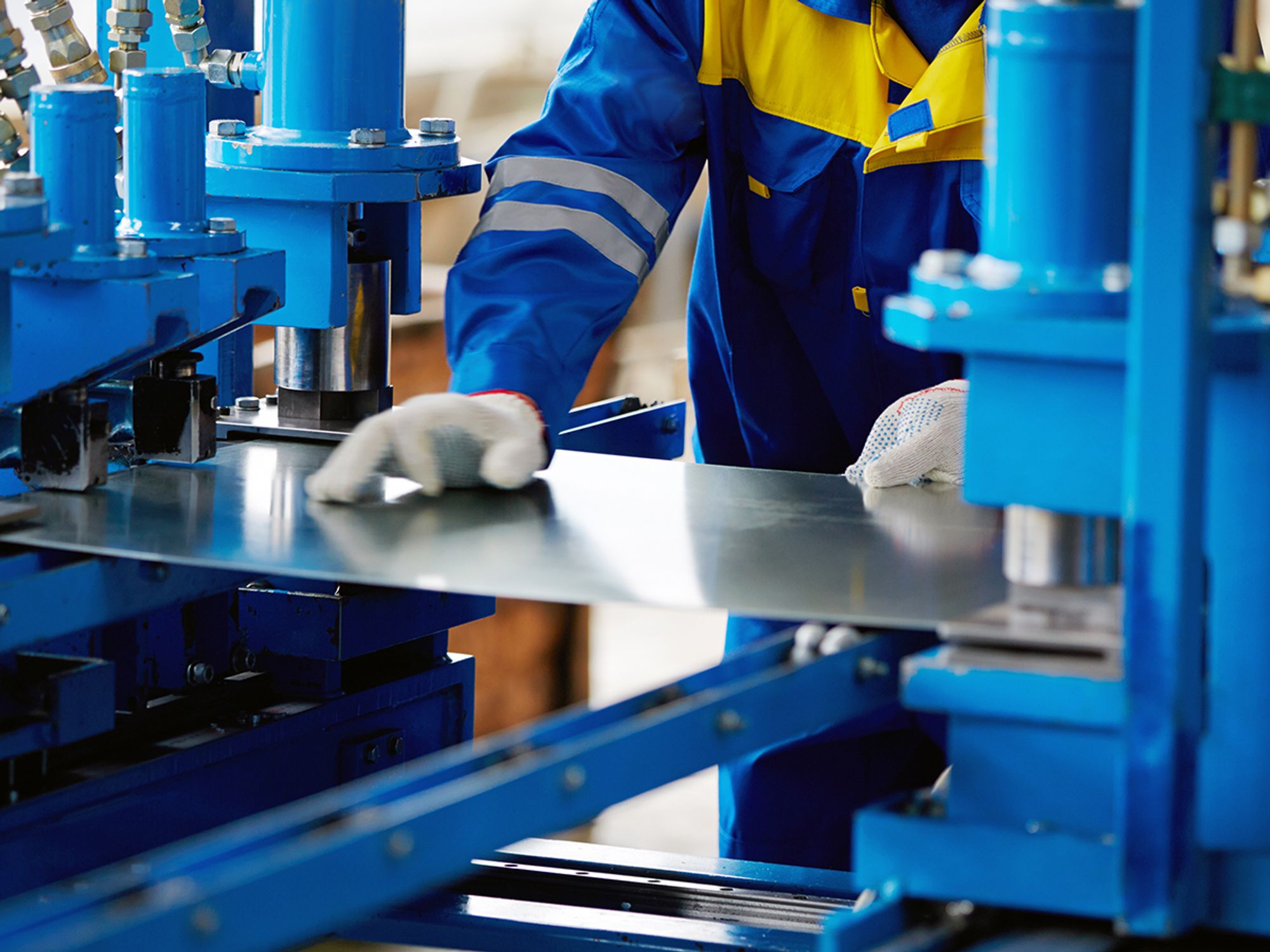What are the OSHA requirements for mechanical power presses?

- Mechanical power presses are extremely dangerous machines that can easily injure the hands of unwary operators.
- Effective safeguarding methods, such as barrier guards and safe work procedures, are required to protect operators from point-of-operation hazards.
A mechanical power press shears, punches, forms, or assembles metal or other materials using an upper die attached to a movable slide and a lower die attached to a stationary bed. Metalworking occurs by placing stock on the lower die and striking it with the upper die. Connecting rods attach the movable slide to a crankshaft, and a clutch is used to connect this crankshaft to a motorized flywheel. When an operator engages the clutch, the crankshaft converts the rotational motion of the flywheel into the lowering and raising of the slide and upper die.
Typical mechanical power presses fall into two main categories based on their type of clutch system: full-revolution clutch and part revolution clutch. Which type of clutch a press uses determines the specific barrier guards and safeguarding methods required for protecting against its hazards.
Power presses are extremely dangerous because of their use in high-production manufacturing and integral operator involvement. Careful operation and strict adherence to safety precautions are essential for protecting operators from the hazards posed by these machines.
Safety requirements for mechanical power presses
The Occupational Safety and Health Administration (OSHA) requires all employers with mechanical power presses to:
- Select the appropriate guarding methods for each individual power press;
- Ensure power transmission components are guarded;
- Ensure each press has a red emergency stop control that can immediately deactivate the clutch and apply the brake;
- Protect foot pedals from accidental operation;
- Keep guards appropriately adjusted;
- Train operators on the safe operation of presses;
- Provide and enforce the use of hand tools for removing stuck work and scrap pieces to minimize the time operators’ hands are near the die opening, even when hand feeding is allowed under 29 CFR 1910.217(d)(1)(ii);
- Establish a system for regular inspection and maintenance to ensure all press components, auxiliary equipment, and safeguards are in safe operating condition and proper adjustment, and retain certification records of all inspections and maintenance (1910.217(e)(1)(i));
- Inspect and test the condition of the clutch/brake control, antirepeat feature, and single-stroke mechanism at least weekly for presses without control reliability or brake system monitoring, and retail certification records of all inspections and maintenance (1910.217(e)(1)(ii));
- Perform servicing and maintenance under an energy control program in accordance with 1910.147, “The control of hazardous energy (lockout/tagout)”;
- Ensure each press has a proper disconnect switch, motor starter, air lockout valve, and transformer for reducing the voltage to 120 volts or less; and
- Report any point of operation injuries to OSHA.
(These requirements are found at 1910.217 and do not apply to press brakes or hydraulic presses, which are instead covered by the general requirements at 1910.212.)
